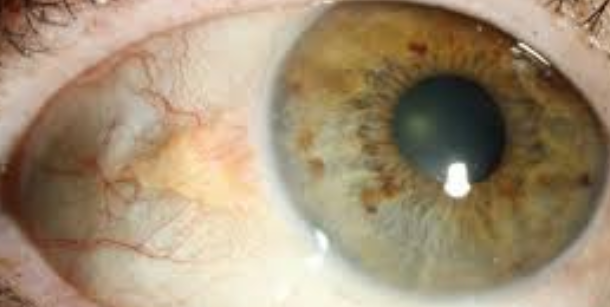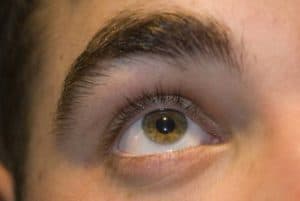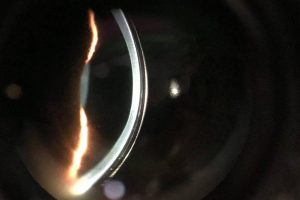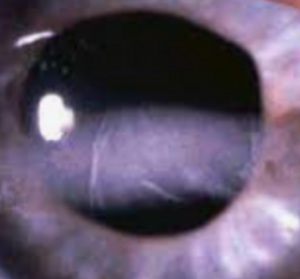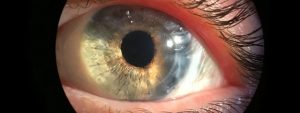Pinguecula are found in over 47.9% of the adult population.
This eye condition might be hard to pronounce, but according to Eye Magazine (2020), it impacts the lives of almost half of all adults.
What is a Pinguecula?
A pinguecula is often confused with a corneal pterygium, but is a benign, pale, yellowish growth on the eye’s conjunctiva – the thin, transparent membrane that covers the outer surface of the eye.
These little growths may appear as cancerous, but they are mainly formed from fat, calcium or protein deposits. Pingueculae tend to be round or triangular in shape and are slightly raised. When they grow and protrude outwards, they can cause eye redness, dry eyes, irritation and other symptoms.
What causes a pinguecula?
Although not all causes of these growths have been identified, we do know that they can form due to excessive exposure to UV light, sunshine, wind, and other harsh elements.
In fact, people who live near the equator are more likely to develop pingueculae than those who don’t, due to the sun’s powerful rays in those areas of the world. Pingueculae are also more common in older people, after the age of 60.
If you suspect you have a pinguecula, or notice any unusual growth on the front of your eye contact an eye doctor near you who can help.
SEE RELATED: Pinguecula and Pterygium
What are common symptoms?
A pinguecula can cause any of the following symptoms, which usually occur solely in the affected eye:
- Blurred vision
- Dry eyes
- Red eyes
- Gritty eyes
- Itchy or burning eyes
- Swollen eyes
Does a pinguecula require treatment?
In most cases, a pinguecula doesn’t require any treatment, as it usually develops with age, is not a cancerous growth and doesn’t cause any obvious discomfort.
However, if your pinguecula is growing and starting to irritate you, it’s time to see your eye doctor.
Your eye doctor can prescribe eye drops or ointments to help soothe your eyes and relieve the swelling and redness.
In severe cases, the pinguecula may need to be surgically removed, but it’s possible for it to grow back even after surgery.
How to prevent a pinguecula from developing
Both pinguecula and pterygium are more likely to develop in people who spend a lot of time outdoors.
To help prevent these growths from occurring, wear good quality sunglasses when outside. Make sure your sunglasses include a UV-blocking coating that blocks the sun’s harmful rays.
Also, sunglasses help protect your eyes from wind and other outdoor elements, such as sand. You should also wear protective eyewear when working in a dusty and dry environment.
Another way to prevent a pinguecula is to keep your eyes moisturized with artificial tears.
LEARN MORE: Guide to Corneal Conditions
Schedule a comprehensive eye exam with an eye doctor near you who can check your vision and eye health.
If you have a pinguecula, a pterygium, or any unusual growth on the front of your eye, it’s important to have regular eye exams to ensure that this condition isn’t impacting your eye health and vision.

